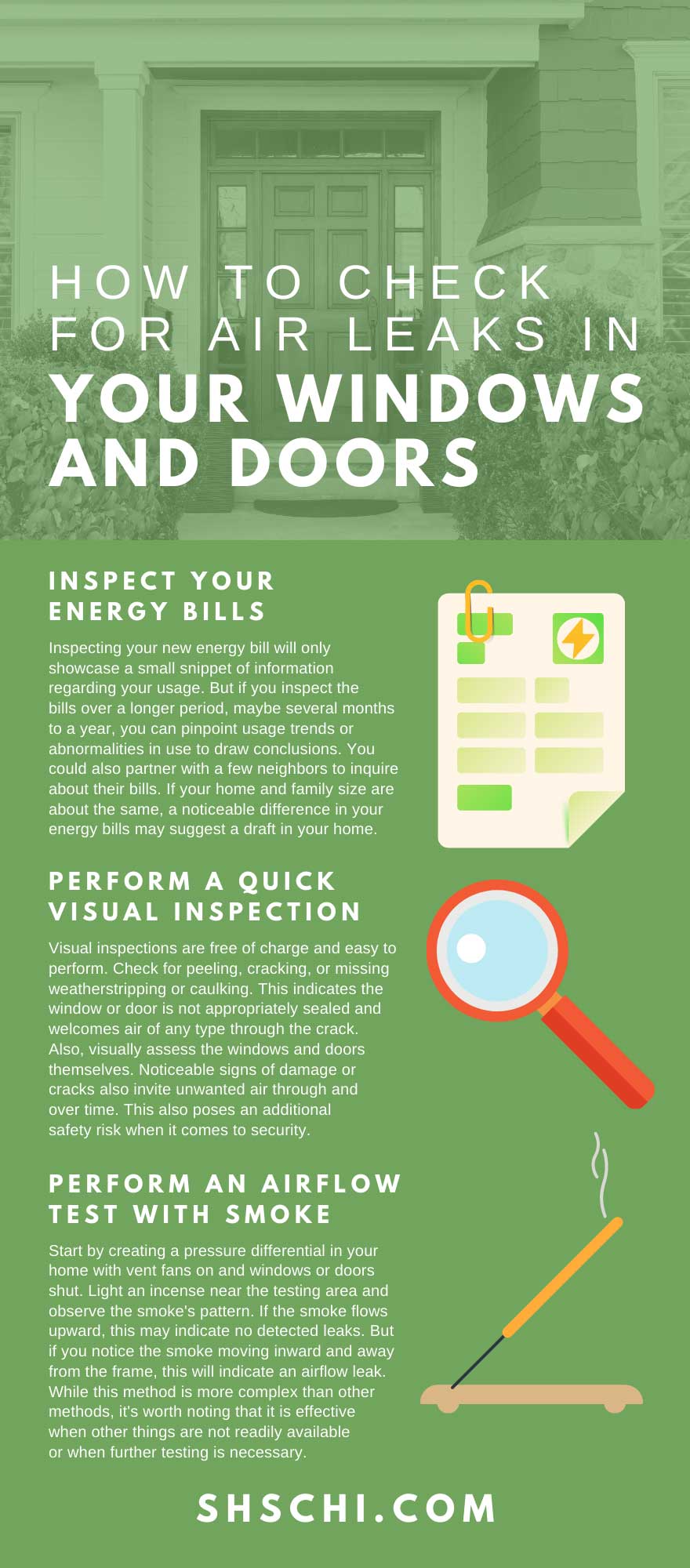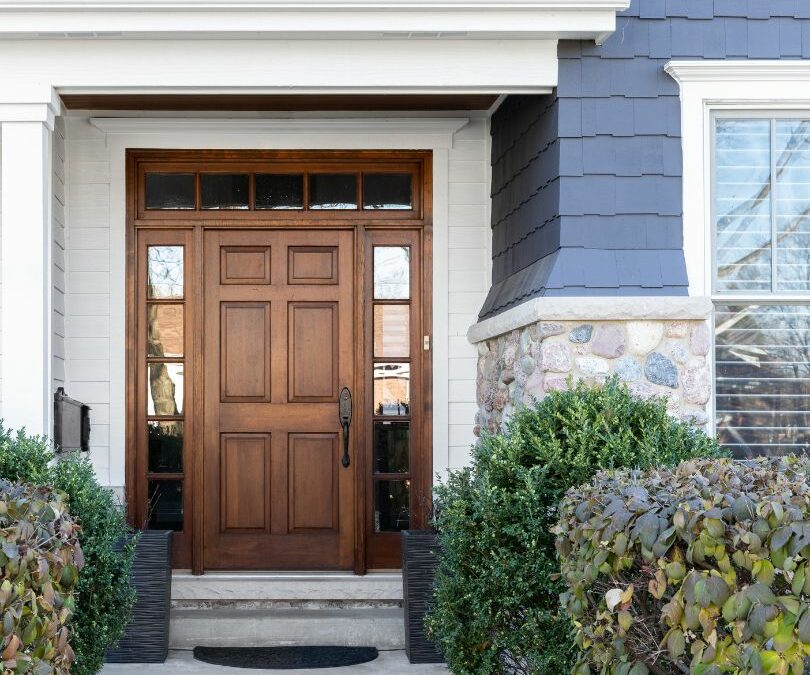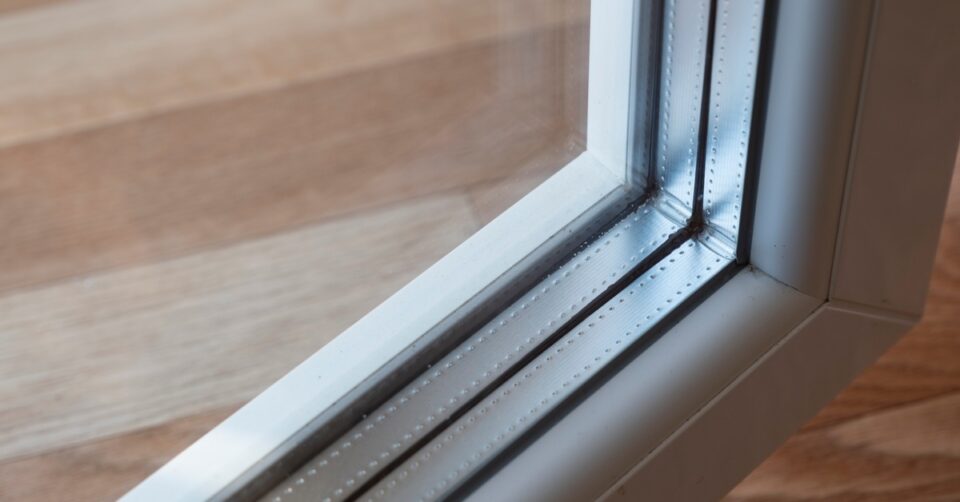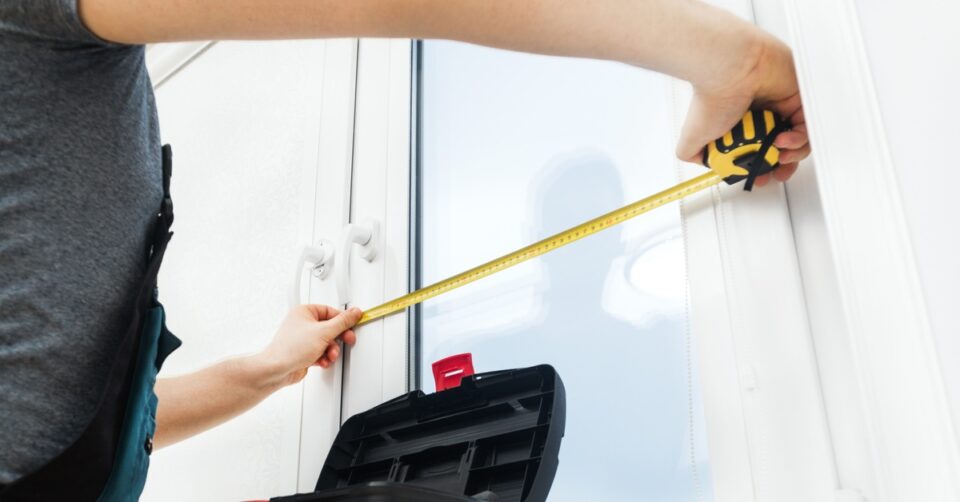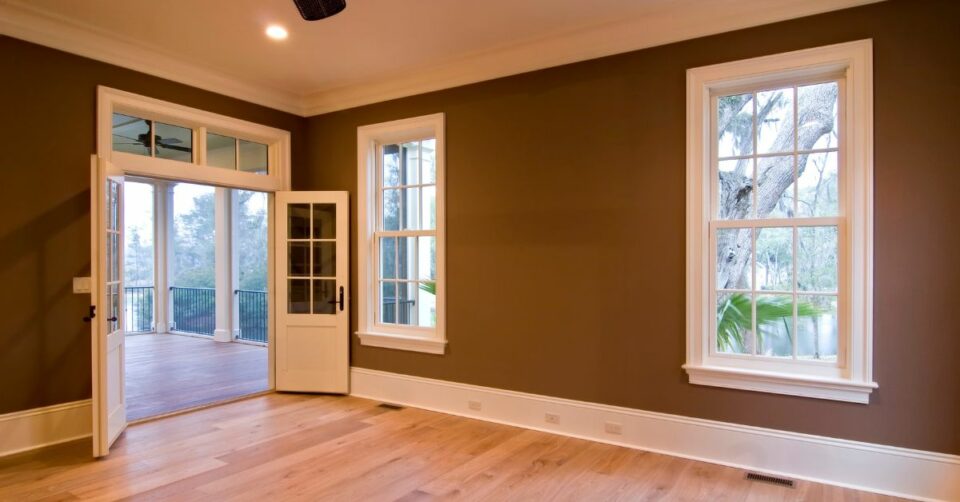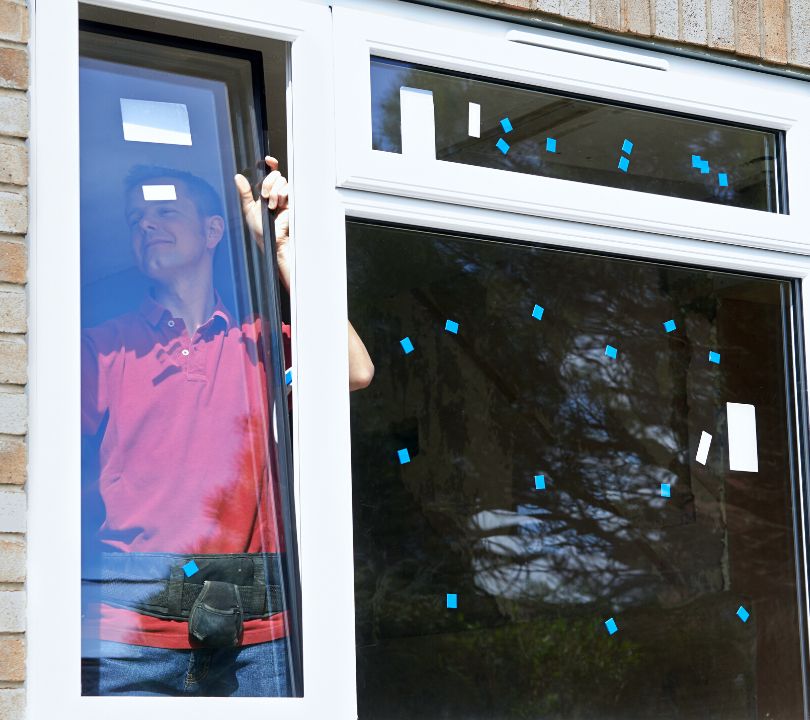
When Is the Best Time of Year To Replace Windows?
February 24, 2023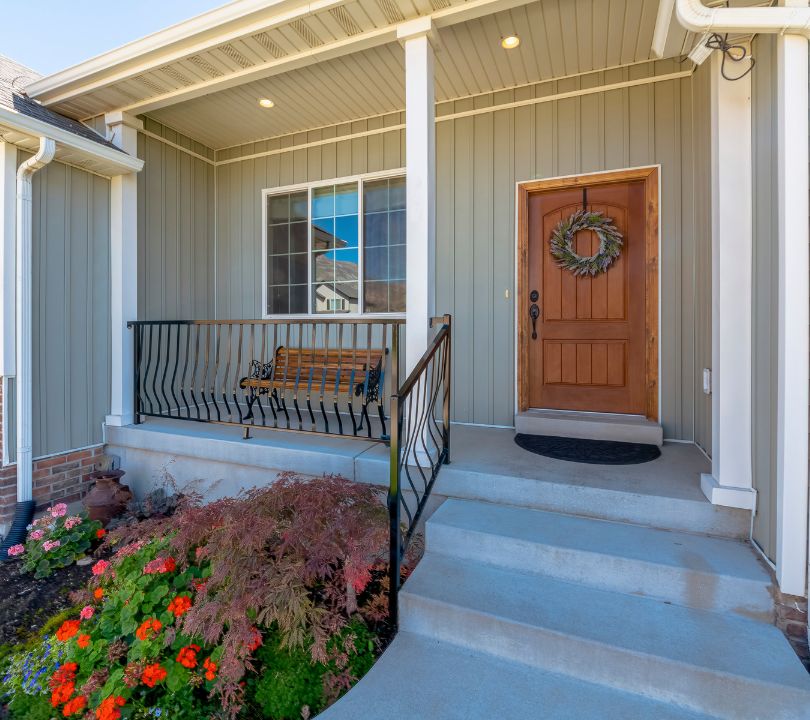
What Is the Most Effective Way To Clean Wood-Clad Windows?
March 7, 2023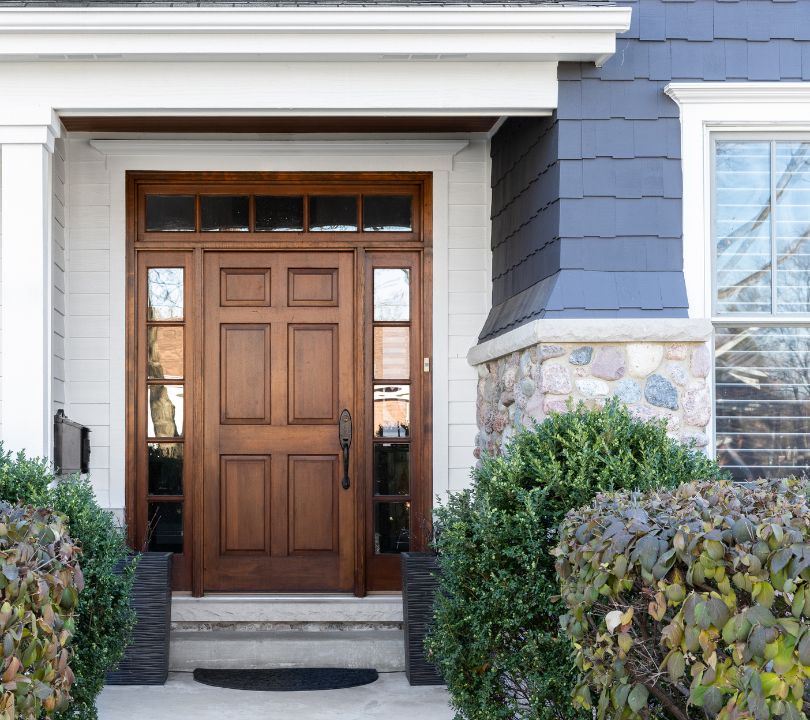
Pinpointing the source of your frustration can be challenging, especially when it involves your home, family, and an aggravatingly large energy bill. The source of much of this frustration is typically leaking windows and doors, even though we may not know it right away. When you need your home’s features checked for issues, various easy and affordable ways exist to achieve these tests and pinpoint the problem. Here we’ll discuss your home leaking air and offer suggestions and solutions.
Consider the Age of the Property
Like anything we buy and own, a house is not immune to natural age and the associated issues that come with it. The windows and doors are a significant element of character, security, and climate control—and with time, they age and begin leaking air.
Unfortunately, older-designed windows and doors do not possess all the advancements of today’s selections, leaving them prone to drafts. Weatherstripping, insulation, and materials have all come a long way from older inventories. When considering the age of your property, this number can reflect the age of your windows and doors and clearly indicate it’s time for replacements.
If you know firsthand that your home’s current windows and doors are newer than the home itself, consider locating the warranty or invoice to review the age and any pertinent data. Upon understanding the needs of your current windows and doors, you can clearly identify the most appropriate course of action.
The Importance of Resolving Air Leaks
Now, you might be questioning why these air leaks are so disruptive and why resolving them is important. There are actually a few other areas that invite air into the home outside of windows and doors; these areas typically include basements, attics, crawlspaces, fireplaces, and electric outlets. But addressing the leaks with windows and doors is much simpler and, on average, much more cost-effective, both upfront and long-term.
That isn’t to say you should ignore other drafty areas, but starting with the most affordable contributor is a great way to resolve the issue. Depending on how many windows and exterior-facing doors your home has, you can expect to see the negative impacts on energy usage throughout the year, and that’s why it’s important to find a resolution rather quickly.
Inspect Your Energy Bills
Inspecting your new energy bill will only showcase a small snippet of information regarding your usage. But if you inspect the bills over a longer period, maybe several months to a year, you can pinpoint usage trends or abnormalities in use to draw conclusions. You could also partner with a few neighbors to inquire about their bills. If your home and family size are about the same, a noticeable difference in your energy bills may suggest a draft in your home.
If you suspect your bill and usage are abnormal for your lifestyle and family’s needs, consider calling the energy provider to perform an energy assessment on your property. Typically, these are free offerings from your provider and include distinct practices to identify air leaks around the windows and doors.
After understanding the age factors and having the energy company complete its assessments, what else can you do? Below we discuss a few easy and inexpensive ways to check for air leaks in your windows and doors.
Perform a Quick Visual Inspection
With enough time in your home, you develop immunity to its unique characteristics and flaws. This means you may miss any visual abnormalities that present themselves and potentially overlook them.
With this in mind, consider performing the visual inspection first before trying alternative air leak tests. Visual inspections are free of charge and easy to perform. Check for peeling, cracking, or missing weatherstripping or caulking. This indicates the window or door is not appropriately sealed and welcomes air of any type through the crack. Also, visually assess the windows and doors themselves. Noticeable signs of damage or cracks also invite unwanted air through and over time. This also poses an additional safety risk when it comes to security.
Use the Paper Test
If you can’t find anything blatantly obvious through the visual inspection, you can turn to the paper test to let the air do the work for you. Place a lightweight piece of paper, either a dollar bill, string of toilet paper, or old receipt, over the seam of the window or door you’re testing. Wait a few moments and watch for airflow movement. This is also a free way to check for an air leak in your windows and doors and will clearly indicate an issue if one presents itself.
You can also use the movement’s intensity to measure the severity of the leak. If the paper moves slightly, it could be a caulking or weatherstripping issue. But if the paper moves a lot, this may indicate exterior and interior integrity damage.
Perform an Airflow Test With Smoke
The airflow trace test with smoke is an incredibly insightful measure that clearly identifies the sources of air leaks. You will want to secure all pets and children before performing this test to ensure everyone’s safety. Also, turn off any appliances like space heaters, ranges, or furnaces to avoid any interference in the results.
Start by creating a pressure differential in your home with vent fans on and windows or doors shut. Light an incense near the testing area and observe the smoke’s pattern. If the smoke flows upward, this may indicate no detected leaks. But if you notice the smoke moving inward and away from the frame, this will indicate an airflow leak. While this method is more complex than other methods, it’s worth noting that it is effective when other things are not readily available or when further testing is necessary.
Let Scientific Home Services Help
At the end of the day, no amount of leaking air is healthy for your home, family, or wallet. Calling Scientific Home Services for a reputable vinyl window replacement can not only resolve the issue long-term but also increase your property’s value and curb appeal. Need an assessment? We can help you pinpoint problem areas and get to the root of the problem.
